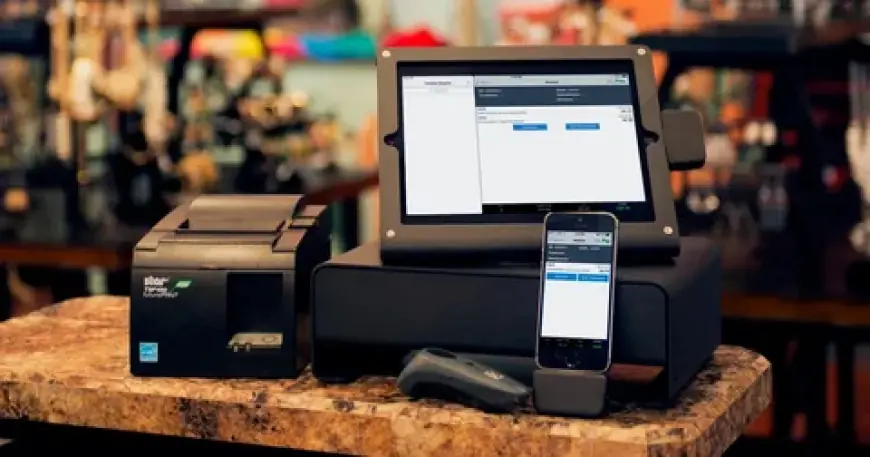How POS Systems Are Helping Solve Inventory Waste & Overbuying
Discover how modern POS systems help reduce inventory waste and overbuying through real time tracking, automated alerts, and smarter stock management.

Inventory waste and overbuying are silent profit killers, in today’s fast-moving business world. According to a recent report, retailers lose over $1.75 trillion globally each year due to inventory distortion, which includes both overstock and out-of-stock issues. The food industry alone sees about 30% of inventory wasted, either through spoilage or expiry. These numbers are not just large, they are damaging to cash flow, storage, and customer satisfaction.
So, what is causing these problems? In most cases, it comes down to poor inventory visibility and reactive buying habits. But modern technology is changing that. With Inventory management POS systems, businesses are now able to control stock in real time, cut down on waste, and avoid overordering, all while improving their bottom line.

Let’s explore how point of sales systems for retail are solving one of the most expensive problems in business today.
The Root of the Problem: Waste and Overbuying
Inventory waste happens when products expire, become outdated, or sit too long on shelves. Overbuying, on the other hand, is when a business orders more stock than it can sell within a given period. Both problems create clutter, reduce profits, and block cash that could be used elsewhere.
For example:
- Restaurants throw out food that expires before it’s sold.
- Retailers discount or toss out seasonal products after holidays.
- Small businesses struggle to track what they have versus what they need.
Most of this waste happens due to a lack of visibility and slow manual systems. That’s where POS technology steps in.
What Is a POS System and How Does It Help?
A Point of Sale (POS) system is where transactions happen, but today’s systems do much more. A good inventory management POS does everything from tracking stock levels to analyzing buying trends.
Here’s what a smart POS system includes:
- Real-time inventory updates
- Sales and customer tracking
- Automated alerts and reorder points
- Integration with vendors and suppliers
- Reporting dashboards for smarter decisions
For businesses that rely on tight control over stock, like retail stores, cafes, and pharmacies, a POS system becomes more than just a payment terminal. It’s the brain behind smarter buying.
1. Real-Time Inventory Tracking
The best way to avoid waste is to know exactly what you have. Traditional stock-taking methods are slow, manual, and often inaccurate. A point of sales system for retail updates your inventory automatically with every sale, return, or transfer.
This means:
- You can spot slow-moving items early.
- You never accidentally order more of what you already have.
- You reduce the chances of spoilage or stockpiling.
Real-time updates also help multi-location businesses stay in sync, so stock is always accounted for across all stores.
2. Smarter Restocking Decisions
Many businesses overbuy because they fear running out. Without accurate data, it’s easy to fall into the habit of ordering “just to be safe.”
POS systems help break that cycle by giving you access to:
- Daily, weekly, and seasonal sales trends
- Best-selling vs. low-performing products
- Peak buying times for each item
This allows for smarter, data-based purchasing rather than emotional guesswork. For example, if a product only sells in December, the system shows you that, and you adjust your orders next year.
3. Low Stock Alerts and Auto-Reorders
Running out of a top-selling item is just as bad as overstocking one that doesn't move. Many inventory management POS systems let you set reorder points. Once your stock dips below a certain level, you get an alert, or the system reorders automatically from your supplier.
This reduces:
- Last-minute bulk orders
- Panic buying
- Missed sales from out-of-stock items
It keeps you lean, efficient, and ready to serve.
4. Demand Forecasting Tools
Some POS systems now offer predictive tools that track demand based on history, promotions, and seasonal shifts. These forecasting features allow you to:
- Prepare better for busy seasons
- Avoid overstock in slow months
- Plan markdowns early for slow sellers
A point of sales system for retail takes the guesswork out of what to order next. Instead of reacting to a problem, you get ahead of it.

5. Reduction in Spoilage and Dead Stock
Spoilage isn’t just a problem in food service, it also applies to fashion, beauty, and electronics. Products go out of season, expire, or lose relevance.
By using a POS system to:
- Rotate stock based on age
- Flag unsold items for clearance
- Plan promotions before expiry
, you dramatically reduce waste. This not only protects your inventory, but also strengthens your profit margins.
6. Clear Reports that Guide Action
Most POS systems generate simple, useful reports:
- What sold this week?
- What products are sitting too long?
- Which suppliers deliver late?
- What trends are growing?
These insights lead to better pricing, leaner buying, and less waste. You also train your team to look at numbers before making decisions.
7. Efficiency Across Departments
Inventory control does not just affect buying. It touches every part of your business:
- Finance: Better forecasting means fewer budget surprises.
- Marketing: Smarter promos based on real stock levels.
- Customer Service: Fewer out-of-stock issues means happier customers.
- Security: Reduced shrinkage and more visibility over lost or misplaced items.
Modern POS systems often integrate with ATM security solutions and access controls as well, adding an extra layer of protection on high-value inventory.
8. Better Vendor Relationships
When you know your numbers, you become a better buyer. Suppliers take you more seriously when you place consistent, well-timed orders. POS systems let you:
- Track which vendors deliver late or overcharge
- Schedule orders based on stock levels
- Avoid duplicate purchases across departments
This leads to smoother workflows and stronger relationships.

9. Sustainability and Business Reputation
Today’s consumers care about sustainability. Overstocking creates waste, which often ends up in landfills. Efficient inventory practices:
- Cut down on waste
- Show responsibility
- Help you promote a greener business model
Businesses that use smart POS systems can proudly highlight reduced waste and smarter sourcing in their marketing.
10. Built-in Security and Protection
Modern POS systems often work alongside ATM security solutions and digital locks to reduce internal theft, track transactions, and secure sensitive areas.
This adds another layer of safety for:
- High-ticket inventory
- Backroom stock
- Multi-location transfers
Security and inventory go hand in hand. A system that tracks both gives you peace of mind and better control.
Final Thoughts
Inventory waste and overbuying are not just supply problems, they are business risks. Left unchecked, they chip away at profits, create stress, and leave money tied up in products no one wants. With a reliable inventory management POS, like Swyft POS, you no longer need to guess. With us, you see what’s working, spot what’s not, and make better decisions. Paired with smart forecasting, real-time tracking, our point of sales systems for retail allows you take control of your inventory. And with the added layer of ATM security solutions, you protect not just what you sell, but also the system behind it. Connect with our professionals now!
Frequently Asked Questions
1. What type of businesses benefits most from POS systems?
Businesses that manage stock daily benefit the most from an inventory management POS. It helps retailers, restaurants, and service providers keep track of stock in real time, reduce waste, and avoid costly overbuying mistakes.
2. Can POS systems really help reduce excess inventory?
Yes. Many point of sales systems for retail offer real-time tracking, reorder alerts, and sales insights. These features help you order just what you need, no more, no less.
3. Are there POS systems that offer built-in security options?
Some modern POS platforms integrate with ATM security solutions, access controls, and transaction logs. This keeps your inventory safe while reducing internal theft and shrinkage.
4. Do POS systems require a lot of training?
Most cloud-based POS systems are designed to be user-friendly. They come with step-by-step tutorials, support, and simple dashboards that teams can learn in a short time.
5. Can a POS system help me forecast demand during seasonal spikes?
Yes. A good POS system can show historical sales data, buying patterns, and peak selling times. This helps you prepare smarter for holidays, events, or seasonal demand without overstocking.
What's Your Reaction?
 Like
0
Like
0
 Dislike
0
Dislike
0
 Love
0
Love
0
 Funny
0
Funny
0
 Angry
0
Angry
0
 Sad
0
Sad
0
 Wow
0
Wow
0

















































